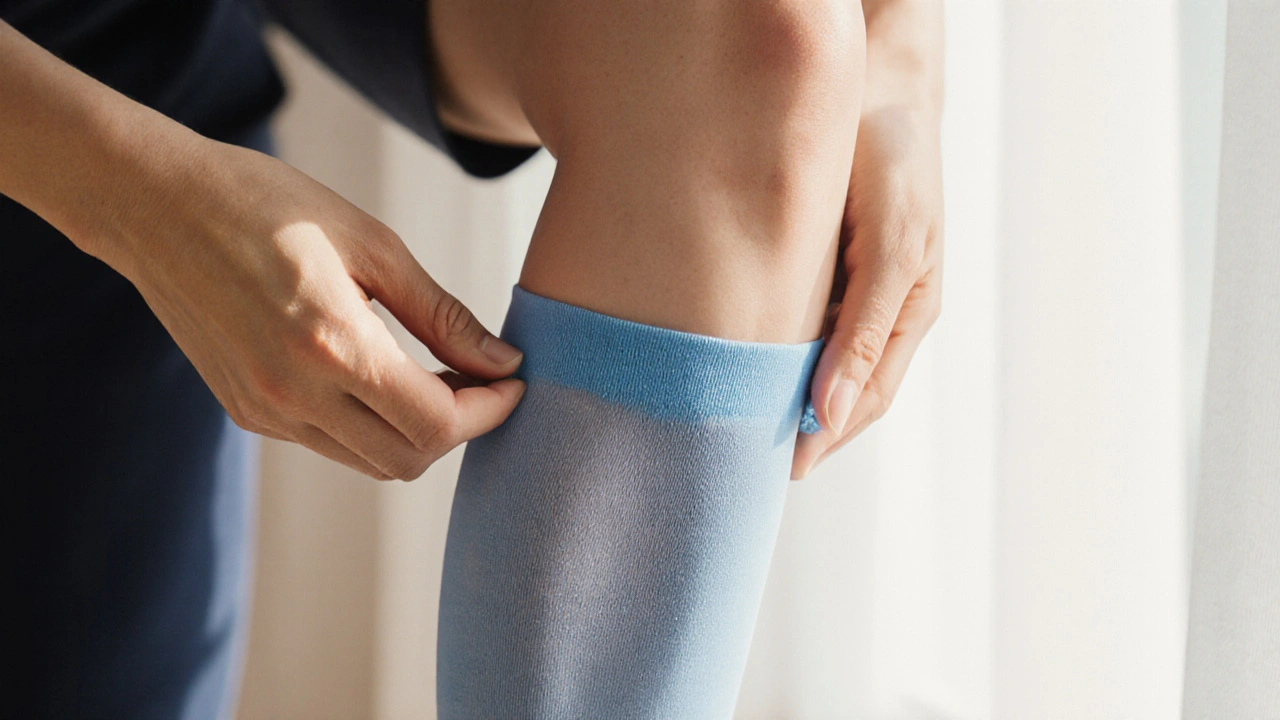Graduated Compression – What It Is and Why It Matters
When working with graduated compression, a therapy that applies decreasing pressure from ankle to thigh to support venous return and reduce swelling. Also known as graded compression therapy, it helps improve circulation and prevents blood from pooling in the lower limbs. This approach encompasses compression stockings, elastic garments designed in graduated levels to match the pressure gradient and requires a proper fit based on calf circumference and leg length. Conditions like venous insufficiency, where veins fail to return blood efficiently to the heart or chronic edema, fluid buildup in tissues often drive the need for this therapy. In short, graduated compression links pressure, fit, and health outcomes in a single, practical solution.
Key Benefits and Common Uses
First, the pressure gradient directly influences blood flow: higher pressure at the ankle pushes fluid upward, while lower pressure higher up avoids constriction. This simple physics reduces swelling, relieves leg heaviness, and lowers the risk of deep vein thrombosis (DVT) after surgery or long flights. Athletes also use it to speed recovery by flushing out metabolic waste, and travelers find it useful for preventing calf cramps. For people with varicose veins, enlarged, twisted veins that cause pain and discoloration, regular wear can ease discomfort and slow progression. Moreover, when combined with leg elevation and movement, graduated compression becomes a cornerstone of chronic venous disease management, aligning with doctor‑recommended lifestyle changes.
Choosing the right stockings hinges on three attributes: compression level (measured in mmHg), length (knee‑high, thigh‑high, or pantyhose), and material (nylon, spandex, or copper‑infused fibers). Low‑grade options (8‑15 mmHg) suit mild edema or everyday comfort, while medical grades (15‑30, 30‑40, or 40‑50 mmHg) target severe insufficiency and post‑operative care. Length matters, too—knee‑highs suffice for most cases, but thigh‑highs or full‑leg garments offer better support for extensive varicosities or lymphedema. Material choice influences breathability and durability; seamless designs reduce skin irritation, an important factor for diabetic patients who need gentle yet effective pressure.
Fitting is often overlooked but can make or break the therapy. A proper measurement taken while standing ensures the stocking provides the intended gradient without excessive tightness, which could cause nerve compression or skin breakdown. Many pharmacies offer sizing kits, and online retailers now provide detailed charts and video guides. When in doubt, consult a vascular specialist or a certified fitter; they can assess ankle circumference, calf shape, and any skin conditions before recommending a specific grade.
Beyond health, graduated compression has practical side effects worth noting. Users frequently report improved energy levels after a day of wear because the circulatory boost reduces fatigue. Some studies also suggest modest calorie burn due to the extra effort required by muscles to pump against the gentle pressure—an added perk for fitness enthusiasts. Finally, the aesthetic side has improved: modern designs mimic regular hosiery, making them less conspicuous for everyday wear.
Below you’ll find a curated collection of articles that dive deeper into everything from headache types to skin health, all related to overall wellness. The posts cover medication guides, supplement reviews, and condition‑specific advice—providing a full picture of how graduated compression fits into a broader health strategy. Explore the list to see how improving circulation can complement other treatments and lifestyle choices.
Choosing the Right Compression Stockings for Oedema Relief
A step‑by‑step guide to picking the right compression stockings for oedema relief, covering pressure classes, sizing, material, and care tips.
